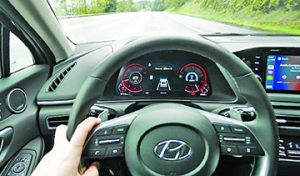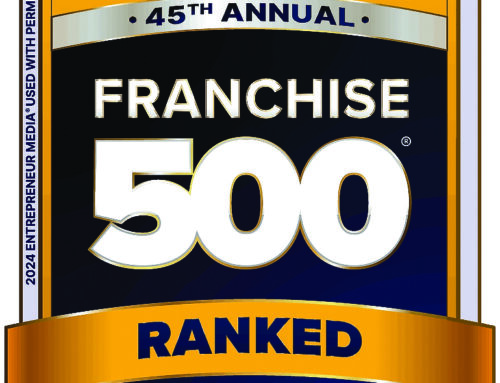 The latest round of AAA research has revealed even more inconsistencies with the performance of driving assistance systems found in vehicles on the road today, with testing resulting in crashes with simulated cars and bicyclists.
The latest round of AAA research has revealed even more inconsistencies with the performance of driving assistance systems found in vehicles on the road today, with testing resulting in crashes with simulated cars and bicyclists.
AAA researchers conducted tests using the following three vehicles:
• 2021 Subaru Forester with “EyeSight”
• 2021 Hyundai Santa Fe with “Highway Driving Assist”
• 2020 Tesla Model 3 with “Autopilot”
Each of these vehicles are equipped with active driving assistance systems, which combine and do their best to automate tasks relating to maintaining lane position, forward speed, and following distance from vehicles in the same lane. Together, these technologies represent the highest level of vehicle automation available for purchase by the public. Importantly, they’re not meant to replace the driver, nor should they be considered fully automated nor “self-driving.”
AAA tested how this technology responds to a series of real-world scenarios, including an oncoming car veering into the test car’s traffic lane and a bicyclist crossing the street. The tests were conducted on a closed course, using a foam car — similar to a sm

More Testing: AAA research has revealed even more inconsistencies with the performance of driving assistance systems.
all hatchback — and an adult bicyclist dummy.
The findings were mixed:
• The active driving assistance systems successfully and consistently detected and braked when approaching a slower-moving vehicle or bicyclist when it was moving in the same direction in the same lane.
• In contrast, all test vehicles collided head-on with the foam car while it was partially within the test car’s travel lane. Only one test vehicle significantly reduced speed before colliding on each run.
• A collision occurred five out of 15 runs, or 33% of the time, when a cyclist crossed the travel lane in front of the test vehicle.
“The bottom line is that the crashes that occurred during AAA testing could very easily become deadly if they happened in a real-world setting — which they commonly do,” said Skyler McKinley, regional director of public affairs for AAA. “Two things can be true at once: Driver assistance technology has gone a long way in improving safety, but it’s still too imperfect to rely on. That’s why it’s so important for drivers to understand their vehicle’s limitations and stay fully engaged while behind the wheel.”
AAA Recommendations
For Automakers
• AAA believes manufacturers should improve existing active driving assistance systems such that they perform more consistently before focusing on more advanced, “self-driving” options.
• Manufacturers should implement driver-focused camera monitoring systems that encourage continual driver engagement and discourage distractions.
AAA Recommendations For Drivers
• Clearly understand how these systems work before integrating them into your regular driving. Request a demonstration from the dealership and thoroughly read the vehicle owner’s manual and other information provided online by the automaker.
• Understand that NO car is fully autonomous or “fully self-driving.” The technologies that cars do have cannot perform without constant supervision from a driver who is ready to intervene.
Americans Aren’t Ready For Self-Driving Vehicles
A new AAA survey reveals consumer distrust of fully self-driving vehicles remains high.
• 85% remain afraid of, or are at least unsure about, riding in self-driving cars.
Despite those hesitations, consumers show strong interest in existing vehicle safety systems, such as:
• Automatic Emergency Braking (63%)
• Lane-keeping Assistance (60%)
“Consumers have consistently been sold a false bill of goods when it comes to new car tech,” McKinley said. “It’s hard to convince folks about future technology if they don’t trust the present, and they can’t trust the present when current technology doesn’t perform safely at all times. Over the years, our testing has repeatedly shown that spotty performance isn’t the exception — it’s the norm.”
Previous AAA Studies On Active Driving Assistance Technology
This is the third round of testing AAA has conducted on Active Driving Assistance technology in as many years. AAA operates North America’s largest testing facility for automated vehicles.
In 2020, AAA research found that vehicles using Active Driving Assistance Systems experienced some type of issue every eight miles on average. Researchers noted instances of trouble with the systems keeping the test vehicles in their lane and coming too close to other vehicles or guardrails.
Last year, AAA research found that rain and bad weather affected the cameras and sensors these systems use to “see”, resulting in a crash with stopped vehicles in the lane ahead 17%-33% of the time. In aggregate, test vehicles also veered outside of the lane markers 69% of the time.
Consumer Survey Methodology
The AAA consumer survey was conducted on January 13-16, 2022, using a probability-based panel to represent the U.S. household population overall. The panel provides sample coverage of approximately 97% of the U.S. household population. Most surveys were completed online; consumers without Internet access were surveyed over the phone. A total of 1,107 interviews were conducted among U.S. adults 18 years of age or older. The margin of error for the study is 4% at the 95% confidence level.
Vehicle Testing Methodology
Closed course testing occurred at AAA Northern California, Nevada, and Utah’s GoMentum Station proving ground in Concord, California. Using a defined set of criteria, AAA selected the following vehicles for testing: 2021 Subaru Forester with “EyeSight®,” 2021 Hyundai Santa Fe with “Highway Driving Assist,” 2020 Tesla Model 3 with “Autopilot” and were sourced from the manufacturer or specialty rental fleets. Please refer to the full report for specific methodology regarding testing equipment and closed-course test scenarios.







Leave A Comment